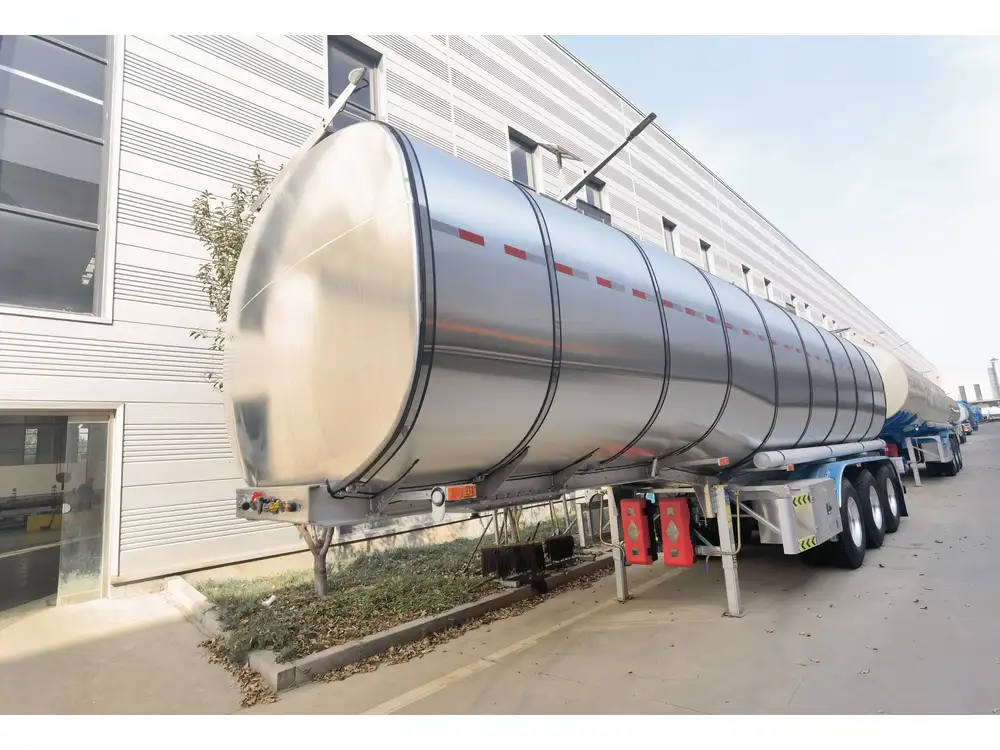When it comes to ensuring the optimal performance and safety of semi-trailers, understanding how to measure brake shoes is paramount. As a critical component in the braking system, brake shoes are responsible for exerting pressure against the brake drum or disc, thus providing the necessary friction to slow down or stop the vehicle. This guide equips you with the essential knowledge to accurately measure semi-trailer brake shoes, facilitating effective maintenance and enhancing vehicle safety.
Importance of Accurate Measurement
Accurate measurement of brake shoes is crucial for several reasons:
- Safety: Worn or incorrectly sized brake shoes can lead to reduced braking efficiency, increasing the risk of accidents.
- Performance: Properly measured brake shoes ensure uniform wear and optimal contact with drums, contributing to smoother and more reliable braking.
- Cost Efficiency: Regularly measuring and replacing brake shoes as needed can prevent costly repairs or accidents resulting from brake failure.
Tools You Will Need
Before you commence the measurement process, gather the following tools:
| Tool | Purpose |
|---|---|
| Digital caliper | For precise measurement of brake shoe thickness and width |
| Ruler or tape measure | To measure the overall length and height of the brake shoe |
| Torque wrench | To check the tightness of mounting bolts (optional but recommended) |
| Safety gloves | To protect your hands during the process |
| Safety goggles | To safeguard your eyes from debris |

Steps to Measure Semi-Trailer Brake Shoes
Measuring semi-trailer brake shoes involves a systematic approach that ensures completeness and accuracy. Follow these steps carefully:
1. Safety First: Prepare Your Work Area
Create a safe and clean workspace:
- Park the trailer on a flat surface and ensure it is secure.
- Engage the parking brakes and place wheel chocks to prevent movement.
2. Remove the Wheel
To access the brake assembly, remove the wheel:
- Use a lug wrench to loosen the wheel nuts while the wheel is still on the ground.
- Lift the trailer using a jack and securely support it with jack stands.
- Fully remove the wheel and set it aside.

3. Access the Brake Assembly
Once the wheel is removed, you can access the brake assembly:
- Inspect the brake drum or disc for any visible damage or wear.
- Locate the brake shoes; these are usually situated within the drum assembly.
4. Measure the Thickness of the Brake Shoe
Using a digital caliper, measure the thickness of the brake shoe:
- Place the caliper on the friction material (the part that contacts the drum).
- Ensure it is perpendicular to the shoe for an accurate measurement.
- Record the thickness in millimeters or inches.
Measurement Guidelines
- New brake shoes typically have a thickness of around 0.25 inches (6.35 mm) or more.
- Replace brake shoes if the thickness is below the manufacturer’s specifications, often around 0.06 inches (1.5 mm).

5. Measure the Width
The width of the brake shoe is another critical metric to measure:
- Again, use the digital caliper to measure from one edge of the shoe (where it connects to the backing plate) to the other.
- Record this measurement, as it helps determine compatibility with the brake drum.
6. Measure the Length and Height
Next, measure the overall length and height:
- Length: Use a ruler or tape measure to measure from the top to the bottom of the shoe along its curved edge.
- Height: Measure from the center of the shoe to the edge to ensure it fits the designated application.
| Measurement | Typical Values |
|---|---|
| Thickness | 0.25 inches (6.35 mm) |
| Width | Varies by manufacturer |
| Length | Varies, typically 11-16 inches |
| Height | Typically 5-7 inches |
7. Inspect for Wear and Damage
While measuring, it’s vital to inspect the brake shoes for any signs of wear or damage:
- Cracks: Look for visible cracks or split edges. This indicates failure.
- Glazing: A shiny surface may indicate overheating. Replace if necessary.
- Debris: Check for accumulated dirt or brake dust, which may interfere with performance.

8. Measure the Arc of the Brake Shoe
The arc of the brake shoe is an essential dimension that influences installation:
- Use a flexible measuring tape to follow the curve of the brake shoe from one end to the other.
- This measurement ensures the shoe fits snugly within the drum.
9. Finalize and Document Results
Compile your measurements in a structured manner:
| Measurement Type | Value (Inches) | Value (MM) |
|---|---|---|
| Thickness | ||
| Width | ||
| Length | ||
| Height | ||
| Arc Length |
Make a note of each measurement and compare them against the specifications provided by the manufacturer or refer to the service manual for your specific semi-trailer model.
Common Issues in Brake Shoe Measurements
While measuring brake shoes, several issues may arise. Here are some common pitfalls to avoid:

1. Inaccurate Measurements
Ensure your calipers and rulers are calibrated correctly to avoid discrepancies.
2. Wear Patterns
Pay attention to uneven wear patterns that may indicate alignment issues or improper adjustment.
3. Installation Errors
Improper positioning during installation can lead to premature wear. Ensure shoes are correctly seated and aligned in the drum.

Troubleshooting Brake Shoe Problems
Should you encounter issues with the brake shoes, consider the following troubleshooting tips:
| Issue | Potential Cause | Solution |
|---|---|---|
| Noisy brakes | Worn shoes or improper installation | Inspect and replace shoes if necessary |
| Uneven braking | Contaminated shoes or worn hardware | Clean and replace as needed |
| Reduced braking power | Worn shoes below minimum thickness | Measure and replace shoes immediately |
| Vibration when braking | Misaligned shoes or unsound drum | Realign shoes and inspect drum |
Conclusion: Maintaining Your Semi-Trailer Brake System
Understanding how to measure semi-trailer brake shoes is fundamental to maintaining the safety and efficiency of your braking system. Regular measurement and timely replacement on observing significant wear can considerably enhance not just the performance of your vehicle but also its longevity on the road.
Incorporate these measurement techniques into your maintenance routine to ensure your semi-trailer remains in optimal condition. Always consult with a certified technician if you’re unsure about any measurements or replacement procedures.
Further Recommendations for Brake System Maintenance
- Routine Checks: Implement a regular inspection schedule for brake components.
- Documentation: Keep detailed records of measurements and maintenance activities.
- Professional Guidance: Engage with professionals for complex issues or uncertainties.
By adopting a proactive approach to measuring and maintaining your semi-trailer brake shoes, you ensure greater safety, enhanced performance, and peace of mind on the road. Emphasizing the significance of brake maintenance helps not just in preventing accidents but also in maximizing the lifecycle of your vehicle’s braking system.



